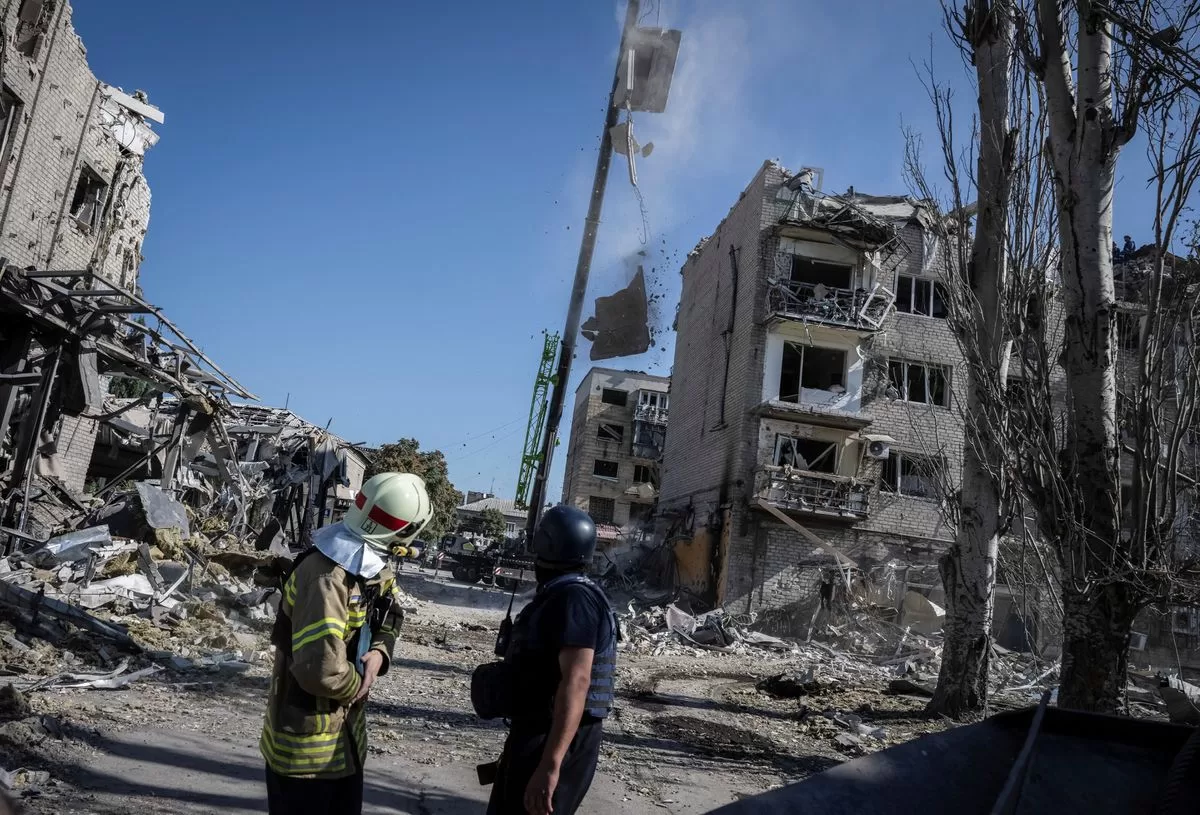Xiaomi announced this Thursday (20) the arrival of the Redmi Note 12 line in Brazil, and took advantage of the event to talk to Canaltech about the product’s differentials and also about the evolution of the brand in the country in these almost four years since its return. to Brazil in May 2019. Unlike what happens in some countries, the series will be composed at this first moment by only three models — Redmi Note 12 4G, Redmi Note 12 and Redmi Note 12 Pro —, leaving out the Redmi Note 12 Pro Plus and its 200 MP camera.
To talk about the news, we talked to Luciano Neto, Head of Operation Xiaomi Brasil, and Thiago Araripe, Marketing Manager at Xiaomi Brasil, where we had more details about the design of the devices, the manufacturing process and the brand idea behind the launches. We also took the opportunity to remember a little of Xiaomi’s history in the country, and talk about the company’s new focus on communicating better with fans – including those who don’t even know they are fans yet.
Redmi Note 12 4G
The most modest model in the line, the Redmi Note 12 4G focuses on users who are not yet excited about 5G, bringing interesting specifications to the intermediate niche such as the new Snapdragon 685 chipset manufactured in 6 nm, Super AMOLED screen with a refresh rate of 120 Hz and 50 MP main camera.
The design is very similar to what we have in the rest of the line, with a large rectangular camera module in the upper left corner of the rear panel, all buttons located on the right side and a thin-edged screen with a hole centered at the top for the selfie camera. Here, however, we have a flatter finish throughout the device, while its 5G version bets on curves on the sides and on its rear panel.
As with the entire Redmi Note 12 line, we have a 6.67-inch screen, a 5,000 mAh battery — with a 33 W recharge, like its 5G brother —, IP53 certification for protection against splashes of water, MIUI 14 running factory, digital reader integrated into the power button on the side and two auxiliary cameras on the back, one 8 MP ultrawide and one 2 MP macro. The front camera is 13 MP.
Redmi Note 12 5G
Much of what has been said about the Redmi Note 12 4G applies to the 5G model. We have the same screen, battery and front, ultrawide and macro cameras. However, while the cheapest model arrives with a chipset limited to fourth generation mobile networks, here we have the Snapdragon 4 Gen 1, which already supports 5G networks and is part of Qualcomm’s “new phase” with modified nomenclature.
Interestingly, here the main 50 MP sensor comes out and a 48 MP one comes in, probably to balance costs and offer a more attractive final value. In addition, while the Redmi Note 12 4G only arrives in a version with 4 GB of RAM and 128 GB of storage, the 5G version will have an additional option, also being available with 8 GB of RAM and 256 GB of space for applications, photos and videos — the virtual RAM feature is also improved, with an extra 3 GB in the 128 GB version and 5 GB more in the 256 GB version.
Redmi Note 12 Pro
Closing the line — at least in Brazil, for now — we have the Redmi Note 12 Pro, which stands out for bringing a more complete screen, “flagship” main camera, better front camera, faster recharge and more powerful chipset than it replaces. Qualcomm by MediaTek.
The screen is still a 6.67-inch AMOLED, but here it arrives with superior quality by offering 10-bit color depth for reproduction of more than 1 billion colors, variable refresh rate — from 30 to 120 Hz, depending on the displayed content—and support for HDR10+ and Dolby Vision. Xiaomi also highlights Flow AMOLED technology, which allows even thinner edges on the sides and in the front camera hole.
The main camera features a Sony IMX766 sensor — same as the Xiaomi 12, Xiaomi 12X, Civi 2 and Xiaomi 13 Lite — with optical image stabilization (OIS) for better night performance and several filter options for photos and videos, while the front camera has 16 MP.
The platform used here is MediaTek’s Dimensity 1080, which in the tests carried out by Canaltech proved to be a great option for the mid-range, managing to carry out day-to-day tasks with ease and even run some games without gagging or overheating. It arrives in Brazil in versions with 6 GB of RAM and 128 GB of storage or 8 GB of RAM and 256 GB of internal storage, also with up to 3 GB or 5 GB of virtual RAM in times of greatest need, respectively.
Finally, its recharge is the most powerful of the trio, reaching 67 W already with the charger included in the box, and it is also the only one with a glass finish on the back and a stereo sound system, featuring Dolby Atmos optimization for greater immersion when watching. videos.
Xiaomi not Brazil
During our chat with Luciano Neto and Thiago Araripe, we also commented on Xiaomi’s change in attitude in the country since its return to Brazil in May 2019. After a timid start with few models and a greater focus on the ecosystem, the company has managed to keep moving forward with its physical stores and nationwide distribution through retail partnerships, “taking the word” of Xiaomi to more and more mi fans across the country.
Luciano claims that the big key turn happened in 2022 when the brand decided to change its communication and focus more on product differentials and user experience than on the specifications themselves – that is, saying what people actually want to know. In addition, he celebrated the partnership signed with Polishop, where items such as Xiaomi’s blender, air fryer and robot vacuum cleaner are sold to people who often did not even know the brand until then.
The products are still being produced outside Brazil and imported, but they undergo all the necessary tests and certifications to guarantee full operation in the country, ranging from adaptation in home appliance projects to the use of 4G and 5G frequencies fully compatible with the Brazilian bands in cell phones.
Still on this point, Luciano reinforced the importance of purchasing approved products by consumers — even if they are more expensive than those found in the so-called gray market, that is, imported without any adaptation and sold in physical stores and national marketplaces. He recalls that the problems go far beyond the non-collection of taxes, which can lead to losses such as damage to the electrical network, heating due to the use of plug adapters with different standards or lack of network coverage.
According to Luciano, Xiaomi has been working with retail partners to officially offer its products in more and more places, which consequently helps with the price issue and attracts more and more consumers to the “right side”. He also recalls that the government has been tightening the siege on illegal imports, which should reduce the presence of Xiaomi products in the parallel market.
Asked about the absence of the Redmi Note 12 Pro Plus in the current launch, the head of the Xiaomi operation in Brazil said it was a portfolio organization, since the device would end up being too close to the Xiaomi 12 Lite, which is currently the second best seller of the brand in the country. With that, we may have to wait a little longer to see the model with a 200 MP camera in our country.
Luciano also reinforces Xiaomi’s care in optimizing all stages of production to deliver the best cost-benefit ratio to the final consumer, something that is even reflected in the design of the products, with a similar look for the reuse of test devices, tray for accommodation in the sale box and much more. Thiago Araripe echoes, and recalls points of the project used to balance costs, such as the presence of expansion via micro SD only on Redmi Note 12 4G and 12 5G, something absent in the Pro version.
Finally, when asked about the brand’s next steps, Luciano Neto said that new investments will be made over the next few months, especially to expand the kitchen lines (air fryers, blenders, among others) and items for pet care, always including products with interesting differentials for the public.
“For the next few months, Xiaomi fans can expect us to increase the kitchen and PET lines (smart feeder and drinker, for example). We will also increase our regional presence across the country, including with stores. We want everyone to know about Xiaomi. brand, and rest assured that Xiaomi is around and it’s not a passing thing, it’s really long term.”
— Luciano NetoHead of Operation Xiaomi Brasil
Caravana Redmi Note 12
With the launch of the Redmi Note 12 line in Brazil, Xiaomi decided to do something different, and launched the “Redmi Note 12 caravan”. The proposal aims to celebrate with fans of the brand this new moment for the company, taking the products and various experiences to São Paulo, Curitiba, Belo Horizonte and Recife throughout the month of May.
An event will be seen in each city, with a “mini skate park”, gifts, raffles and promotions, in addition, of course, to actions to publicize the differentials of the Redmi Note 12 line. According to Thiago Araripe, the feat is unprecedented in the country , and is part of Xiaomi’s new communication in Brazil with a greater focus on its fans, including those from places where the brand has not yet managed to open a physical point of sale, such as Belo Horizonte.
“Since this product is very special and we are working on the slogan “Celebrate life”, we wanted to create something special for Brazil that wasn’t just a launch live and bye, it’s over. We wanted to create something closer to Brazilians and to do something unprecedented. So we are creating the Redmi Note 12 Caravan. We are going to four capitals in Brazil, with a fully enveloped van, we are going to stop at cool places in each city, we are going to open a scenography, an attraction, a stage, there is even mobile skate park and other attractions that are more characteristic of each city. All this to really bring the Redmi Note 12, the Xiaomi experience, to the people of this city.
In the first week of May we are in São Paulo, in Vale do Anhangabaú, an event that is free and accessible to everyone, just arrive, there will be a gift, a draw, a lot of things. And we’re going to reach cities where we’ve never been, like Belo Horizonte. Xiaomi has never done anything physical in BH, and we are very much demanded of it, the people of Minas Gerais love Xiaomi, so it is a way for us to embrace these people and show that despite not having opened a store there yet, we are with them and we know from them.
So I think the important thing is to show that the idea is to have four events totally aimed at the public, at the fans of the brand. It’s not just launching the product and that’s it, we’re going to present it physically.”
— Thiago AraripeMarketing Manager at Xiaomi Brazil
price and availability
All three models can now be found on Xiaomi’s official website, as well as in the brand’s physical stores and kiosks spread across cities such as São Paulo, Rio de Janeiro, Curitiba, Salvador, Recife, Manaus and Fortaleza.
The Redmi Note 12 4G will be sold in blue, green and gray, for a suggested price of R$ 2,499.99. As a special launch promotion, it will have its price reduced to R$ 1,999.99 this April 20th, and buyers will also get a casual Xiaomi Daypack backpack as a gift.
The Redmi Note 12 5G will also be sold in blue, green and gray colors. The 4+128GB version will be priced at BRL 2,699.99, while the 8+256GB variant will cost BRL 2,999.99. Anyone who buys the cell phone on April 20th takes home a Mi True Wireless Earphones 2 Basic Bluetooth headset as a gift.
Finally, the Redmi Note 12 Pro arrives in Brazil in blue, black and white. The option with 6+128GB will cost BRL 3,399.99, while the one with 8+256GB will have a suggested price of BRL 3,699.99. Buyers from this April 20th win a Redmi Smart Band Pro.




